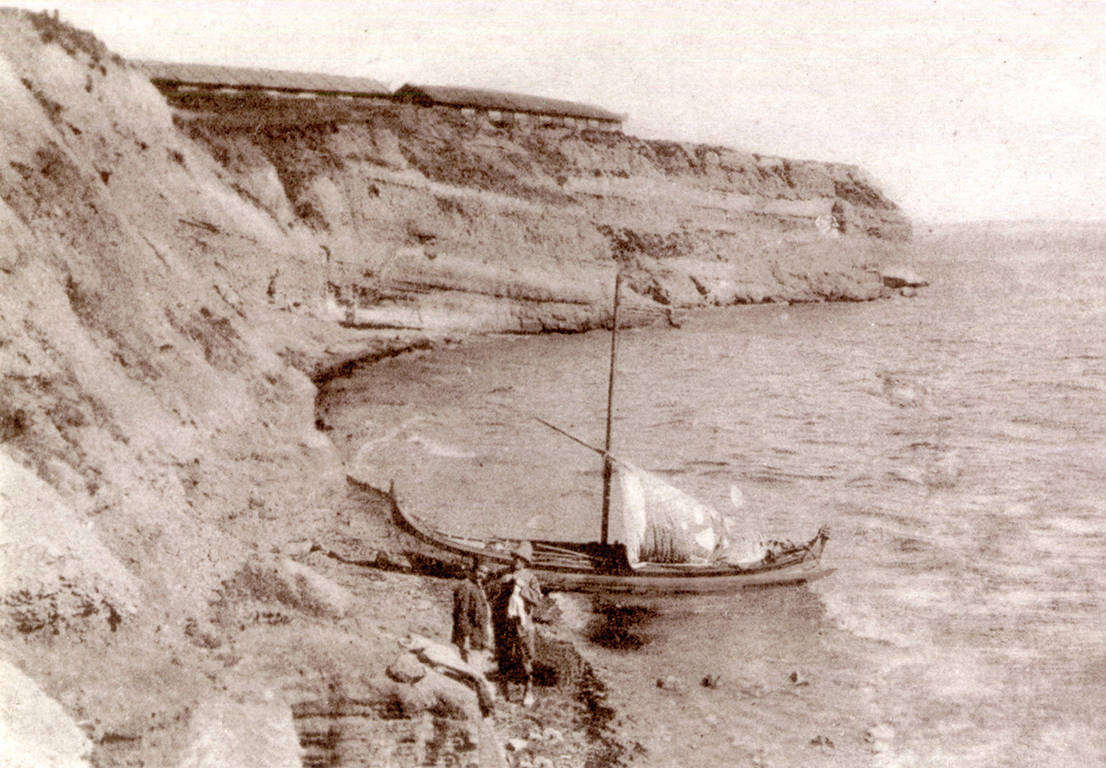Byzantine Kalamaria
Kellarios bay extends from the Allatini Mills to Palataki (Government House). Here was the famous “Kellarion”, the Byzantine port associated with some of the most critical moments in the history of Thessaloniki. The medieval port impressed visitors with its technical excellence, which is evident in the artificial submarine dam that survives intact to this day. It extends to two kilometres to ensure the protection of Byzantine sailing ships and boats that docked here. The port’s existence is one of the best “secrets” of Kalamaria, a monument of unique historical importance that needs protection and promotion. On May 17, 1989, the Ministry of Culture declared the cove an archaeological site to preserve its historical and archaeological form (Government Gazette 384 / 25.5.89).
Sack of Thessalonica (904)
Kellarios bay is associated with one of the most dramatic episodes in the history of Byzantine Thessaloniki, the capture of the city by the Saracens in 904. At the beginning of the summer of that year, the Thessalonians were surprised to learn that an Arab fleet was heading against them. From the ninth century, when they were expelled from Spain, the Saracen pirates had become a threat to the Christians and a considerable force hostile to the Byzantine Empire (especially after the occupation of Crete in the 820s).
In the summer of 904, a sizeable Arab fleet of 54 ships sailed for Constantinople. The fleet was led by the Greek renegade Leo of Tripoli, known in Arabic as Rashīq al-Wardāmī. He commanded a large and disparate force of Arab, Syrian, Egyptian, and Ethiopian pirates. For some reason, the expeditionary force changed destination at the last minute and headed west towards Thessaloniki.
The city was unprepared. The inhabitants were inexperienced at war, and the authorities had neglected the walls for many years. As a result, their height seemed insufficient against a determined attack. Moreover, the announcement of the impending pirate raid by the envoy of the Byzantine emperor, just a few days before the expected appearance of the Arabs, made any attempt to substantially strengthen the fortifications impossible. The only solution was to sink large pieces of marble from the city’s ancient cemetery into the sea in front of the walls in the hope of making it difficult or impossible for Arab ships to approach near the fortifications. Even this desperate plan was soon abandoned, though, in favour of an attempt to raise wooden towers in the wall’s most vulnerable parts.
The Arabs arrived in late July. The inability of the two commanders of Thessaloniki to adopt a specific defence plan and the failure of the Byzantine fleet to assist the city laid the foundations for the impending disaster. Initially, the Thessalonians managed to repel the Arab attacks both from the sea and from the land, despite attempts by the pirates to set the wall gates on fire. After the failure of the first attack, the Arab fleet anchored in Kellarion bay. Ten thousand pirates set up their tents in a place that was clearly visible to the Thessalonians. The siege engines and the countless fires terrified the defenders, but as long as the walls remained invincible, hope remained alive.
However, on the third day, all hope was lost (29 July 904). The Arabs built towers on their ships and could hit the defenders from a greater height. As soon as the boats approached the sea walls, the defence collapsed. Ten days of slaughter and looting followed. The Saracens amassed untold wealth and left with 22,000 prisoners (most of them young men and women), who were sold in the slave markets of the Arab world, while Thessaloniki was reduced to rubble.
The katepanikion
Thessaloniki soon regained its former glory and population. However, the destruction of 904 convinced the Byzantines of the need to reorganise the city’s defences. The control and unchecked use of Kellarion bay by the Arabs proved disastrous. Although there is no clear evidence, a squadron of the Byzantine fleet likely settled permanently on the west coast of Halkidiki and in the area of Skala-Meria, as Kalamaria was called at that time. The port facilities created to serve the fleet’s needs remained in use for about sixty years until the recapture of Crete and the expulsion of the Arabs from the Aegean Sea. Gradually, the Byzantine emperors began to neglect the navy and turn to foreign mercenary fleets, resulting in the decline of the Byzantine port of Skala-Meria. Although the port’s exact location has not been confirmed, there is strong evidence that it was located some distance from the cape of Megalo Karabournou (perhaps in the area of Nea Kallikratia).
However, the abandonment of the port did not mean the obsolescence of Kalamaria as a name and location. For the Byzantines, Kalamaria extended southeast of the city of Thessaloniki, from the foothills of Mount Chortiatis to the neck of the Kassandra peninsula and from the west coast of Chalkidiki in Thermaic Gulf to the east of the village of Agios Mamantos near ancient Olynthus. From 1300, the area became a katepanikion, a small administrative subdivision of the Thessaloniki Theme. The documents of the monasteries of Mount Athos refer to the “katepanikion of Kalamaria” until the conquest of Thessaloniki by the Ottomans in 1430, when gradually the name Kalamaria was limited to the smaller area in the southeast of the city.


